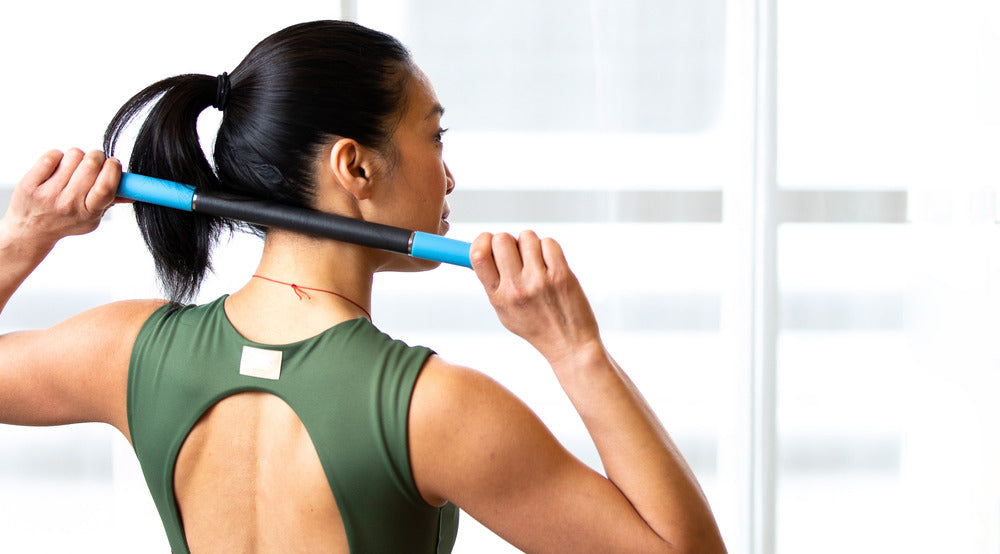What are self massage techniques?

If money weren't an issue, we'd have a professional massage therapist here on-site, just like every professional sports team out there. It's a staple of success for so many athletes because it just works. It helps for recovery, it helps for pain, and it helps to relax, and it's been that way for thousands of years. Almost all cultures have a unique brand of massage that work on pain relief, poor posture, and more. Even racing horses get massages these days.
Since I haven't gotten a call from the NBA lately, it's probably best to focus on self massage therapy for the time being.
I've got a host of tools at my disposal. They sit right next to the living room couch. Why? Because I'm probably going to be there anyway, and it's the perfect time to multitask.
Self Massage Techniques
We're going to focus on a tool-based approach, mainly because it's hard to work on your own back and neck, etc.
First, let's start with a few concepts.
Less is More.
It's important to think of self massage as a lifestyle rather than something you do once a month. You wouldn't take a week's worth of workouts and cram them into one session, and likewise with massage, it's better to do a little less a little more frequently.

The key component that most people don't know about is that massage therapy works on the nervous system. Your autonomic nervous system is the part of the nervous system that controls the things you don't actively think about like blood pressure, digestion, and maybe most importantly for our discussion; resting muscle tension.
There are a host of physical and mental benefits, but we'll keep to the nervous system for now.
Having too much resting muscle tension is generally a sign of too much stress. You don't choose to have a tight neck per se, but it's the body's way of putting you in a defensive state. This worked well back in the caveman days when we needed to tense up and get ready to run from that lion, but most stress in the modern world isn't physically harmful, it's ya know... 'in your head'.
It's good to take hold of resting muscle tension. It tends to throw off our posture, puts extra pressure on our joints, and generally makes us feel tight.
Pressure is key.
With self massage, it's best to whisper frequently at your nervous system, instead of yelling at it once a week. Light pressure over longer periods of time can help help you to develop a dialogue with your nervous system, because it's always listening.
Experienced users will instinctively know the right amount of pressure that your body needs, but if it's your first time then we've got some guidelines here for you.
Always be breathing.
Massage therapists almost always start a session with light and long strokes. This helps to relieve tension right off the bat, and allows the nervous system to chill out and take a backseat. While you're probably thinking "I could use a little more pressure," they're using a time-honored technique to get your body ready to dive deeper.

You can do the same thing at home, and use your breath as a guide. If you've got a massage ball underneath your hip, you always want to ease in. If you feel like you need to hold your breath, it's a good time to back off, because your nervous system is telling you that it's too much, and the body is bracing for something it's unfamiliar with.
You want to keep focus on what's under the skin, and if you're able to consciously breathe deeply while doing so, you're teaching your body about safe movements, and training the nervous system to relax at the same time.
Gentle pressure to start, folks, especially if you're looking for pain relief.
Grinding your teeth with a foam roller on your IT band isn't our idea of a great time....Guessing it's not yours either. Leave the no pain no gain mentality at the gym.
Productive discomfort?
Discomfort is OK, but pain is not. If you haven't stretched your quads in five years, odds are you might find a little discomfort there. Not pain per se, but discomfort. It's an important difference, and one your body knows well. If you touch your hand to a hot stove, the body instantly reacts (before you even consciously think about it, in fact).
More pain is not more gain
We're in search of a low-level discomfort that will give way to a feeling of weightlessness after the self massage is done. The muscle tension gives way. The big-breath-out-relief.
With self massage tools, it's always best to start bigger. The bigger the tool, the more surface area there is to spread out over the area. Read: less pressure. Start with a big foam roller, rather than a tennis ball sized tool.
You can always go deeper later, but we're gonna act like that massage therapist and use gentle pressure to help warm the tissue up, and gently transition to firm pressure.
Just remember, if you're holding your breath or clenching your jaw, just back off the pressure. Easy, right?
Three type of specific self massage techniques
There are three main techniques to think about when you're getting ready to roll. Whether your goal is to help you get sore muscles recovered faster, help with muscle pain or pain relief, or just releasing tension, these techniques will help you narrow in and get focused.
Muscle Flushing
Recovery is all about fluid movement. Get a fresh blood supply in, and get the waste out. Your body's systems are already doing their tireless job, but we're looking to turbocharge the system.
Muscle flushing is unique because we apply pressure and use long, light strokes to encourage fluid movement. We're not going to sit and hang out on the muscle for long periods of time, it's all about building repetitions.

We're using tools like massage sticks, larger foam rollers, and anything that isn't going to dive too deep. Super sore muscles don't like to be messed with too much, after all.
You're looking to stack up about 20 repetitions, and you should expect to feel a 50% reduction in soreness.
Pin and hold
We use the pin and hold technique when we're trying to increase our mobility, or range of motion in any given muscle or joint.
It's about as simple as it gets in terms of self massage techniques. Simply compress the muscle, and hold for 30-60 seconds, then move to the next point along the muscle.
Let's use foot massage as an example. Self myofascial release (a more fancy term for massage), works wonders in dealing with little foot pains. Choose a ball like the Neuro Ball, set your heel on the ball, and inch your foot back until you feel the ball start to sink in, so you're on tissue, not bone. Simply relax, breathe, and let your foot sink into the ball. Body weight is enough, in this case.

If you're feeling budget conscious, a tennis ball would work in a pinch...But just remember tennis balls are designed for tennis, not myofascial release or massage.
You can use stronger pressure here, as long as you're staying away from making the 'pain face', or holding your breath.
Remember, productive discomfort, not pain. In this case, more pain just means more pain, it's not additive.
Trigger Points?
Let's talk trigger points for just a minute. Trigger points are little knotty-like areas of tissue that tend to be painful, or at least uncomfortable.
Sometimes you can spend some time working on a trigger point and it will effectively go away, and sometimes it just doesn't. Occasionally you need a little more investigation.
For example, people can develop 'knots' in their back, because the abdominal muscles on the other side of the body are causing a twist in the spine. If you find a trigger point that won't go away, a professional masseuse might be able to help find an answer.
In the end, researchers and therapists don't have a concrete reason as to why they appear, but most folks certainly are aware of them ;)
Shear
Shear is different from compression in because of the direction of force. Compression simply puts the pressure straight into the muscle. Shear is different because it focuses on sideways pressure. It's a massage technique we use when we want to alter the tissue in specific directions.
Why would we want to shear tissue sideways? It has to do with fascial patterns in the body. Fascia is the spiderweb-like network of collagen that provides structure to muscles, skin, and organs. It's actually what makes up your tendons and ligaments as well. Muscle cells, for example, just move back and forth, but they need the structure of fascia to organize them and keep their shape.
In effect, we're mobilizing and stretching our fascia, rather than the actual muscle cells.
Knowing this, sometimes fascia builds up in directions that don't line up with the muscle. You have tension that's pulling the muscle to the side, holding it in a strange position, etc.
For some self neck massage techniques, you could take a rod, put pressure into the space below your skull (common area for tension headaches), then shear towards your back. You're taking the tissue where you want it to go, adding in some movement along the way. As always, deep breathing helps relax the muscle tissue.

Most neck pain and neck tension is simply the result of overactive muscles in the back of the neck.
Poor posture in the upper back leads to the neck being stuck out too far forward, causing those poor little muscle to work overtime, all the time.
If you're in a pain situation, or just got out of surgery, shear is certainly a game changer for rehab situations, but make sure you talk to your rehab specialist, or a licensed massage therapist...They're typically happy to show you how. It makes their job easier and it'll help you get back to your normal life even faster.
In conclusion...
Self massage should be an easy exploration of what's going on in your body, whether you're looking to de-stress, or working to get out of pain.
Don't be afraid to explore
Using these techniques will help you stay in a safe place to explore, and we do want you to explore! Ever used self massage on your jaw? Your lats?
The more you try, and the more you learn about the forces and tensions in your own body, the better off we think you'll be.
Discomfort is OK, pain is not.
Self massage should never hurt, it should only hurt-so-good, in the john mellencamp type of way. If you feel pain or feel worse after doing any type of movement, then simply move to another area.
Less is more
Self massage is just like exercise. You wouldn't expect to be super fit after one session, and likewise with massage, it won't happen overnight. Use lighter pressures and more frequent sessions to begin to retrain your tissues.
Not to say you won't feel better immediately, but take your time, and the results will come.
Start exploring, and enjoy the ride!
Discover products that you might be interested in one of our popular For Weight Lifters




















